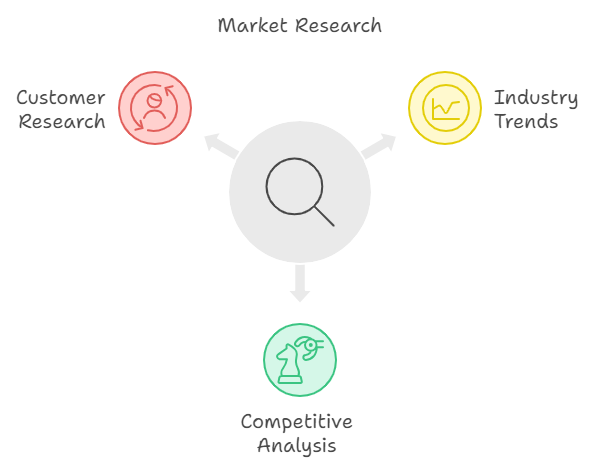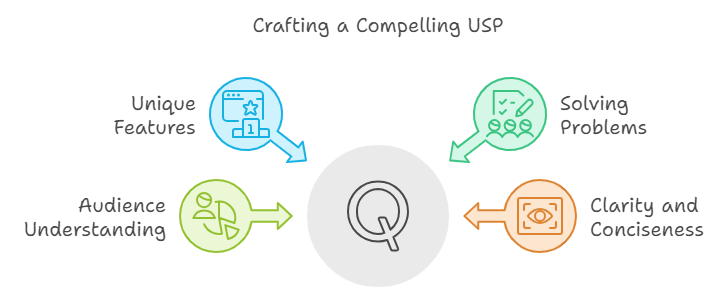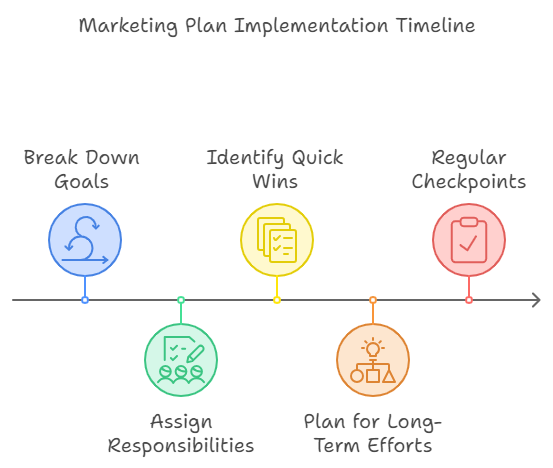Introduction
Creating a marketing plan is essential for any business that aims to thrive in today’s competitive landscape. A well-crafted marketing plan provides direction, outlines key strategies, and ensures every marketing effort aligns with your business goals. Without a clear plan, businesses risk wasting resources on ineffective strategies or missing out on valuable opportunities. In this guide, we will break down the marketing plan contents every business needs to succeed, from conducting thorough market research to setting actionable goals. Whether you’re a startup looking to establish a presence or an established company refining your strategy, these essential elements will help you build a roadmap to marketing success.
1. Executive Summary
The executive summary is a concise snapshot of your entire marketing plan. It serves as a quick-reference guide that highlights the main objectives, strategies, and goals your business plans to achieve. Though it’s usually written last, the executive summary appears at the beginning of your plan to give stakeholders a high-level overview. Here’s what to include:
- Business Goals: Start by summarizing your company’s overall business goals and how marketing will support those objectives. For example, if your goal is to increase revenue by 20% in the next year, your marketing efforts should focus on lead generation, conversion optimization, and customer retention.
- Key Marketing Strategies: Offer a brief outline of the core strategies you plan to implement. This might include content marketing, social media advertising, email marketing, or influencer partnerships. Focus on the most impactful channels and approaches for your target audience.
- Target Market Overview: Identify your primary customer segments and why they were chosen. This should be a brief summary of the detailed market research you’ll present later.
- Budget Overview: Provide a general idea of your marketing budget, along with how it will be allocated across different channels and strategies. This will give stakeholders insight into resource distribution.
- Projected Outcomes: End with a summary of your key performance indicators (KPIs), such as expected increases in traffic, sales, or customer engagement. These should be measurable and aligned with your broader business goals.
2. Market Research and Analysis

Market research is a foundational step in developing any marketing plan. It provides the data you need to understand your industry, identify potential customers, and analyze your competition. A strong market analysis will inform your strategy, ensuring that your marketing efforts are targeted and effective. Here’s how to conduct thorough market research:
- Identify Industry Trends: Start by researching your industry’s current trends and projections. Look for reports, studies, or surveys from reputable sources that offer insights into market growth, technological advancements, and consumer behaviors. Understanding the broader market landscape allows you to adapt to changes and position your business for future success.
- Competitive Analysis: Analyze your key competitors by looking at their marketing strategies, customer engagement, and product offerings. What are they doing well, and where are their weaknesses? Tools like SWOT (Strengths, Weaknesses, Opportunities, Threats) analysis can help you identify areas where your business can differentiate itself. This information is crucial for crafting your unique selling proposition (USP).
- Customer Research: To understand your target audience, gather data on customer preferences, needs, and buying behaviors. You can use surveys, social media insights, and tools like Google Analytics to get a better understanding of what drives their decisions. This data will guide your marketing strategies to ensure they resonate with your audience.
3. Defining the Target Audience
Once you’ve completed your market research, the next step is to define your target audience. Knowing exactly who you’re marketing to is critical for creating personalized and effective strategies. Here’s how to narrow down your ideal customer segments:
- Demographics and Psychographics: Start by identifying key demographic factors such as age, gender, location, and income level. Then, go deeper by analyzing psychographics, which include your audience’s interests, values, lifestyles, and purchasing motivations. The more detailed your customer profiles are, the easier it will be to craft tailored messages.
- Creating Buyer Personas: To bring your target audience to life, create detailed buyer personas. These are fictional representations of your ideal customers based on real data and insights. A buyer persona might include a name, job title, challenges, goals, and preferred communication channels. Buyer personas help ensure that your marketing messages are relevant and resonate with your audience’s needs.
- Segmentation: Not all customers are alike, even within the same target audience. Segment your audience into different groups based on behaviors, preferences, or demographics. For example, one segment might include frequent online shoppers, while another may consist of customers who prefer in-store purchases. Segmenting your audience allows you to customize your marketing efforts for maximum impact.
4. Marketing Goals and Objectives
Setting clear marketing goals and objectives is crucial for measuring the success of your strategies. Without specific targets, it’s difficult to gauge whether your efforts are paying off. That’s where the SMART framework comes in:
- Specific: Your goals should be well-defined and clear. For example, instead of saying, “We want to increase sales,” a specific goal would be, “We want to increase online sales by 15% over the next quarter.”
- Measurable: Ensure your goals are quantifiable. This allows you to track progress and know when you’ve achieved your objectives. Metrics such as website traffic, conversion rates, or customer retention rates can be used to measure success.
- Achievable: Set realistic goals that are within reach. Overly ambitious goals can lead to frustration and demotivation, while achievable goals build momentum and confidence.
- Relevant: Your marketing goals should align with your broader business objectives. If your company’s priority is brand awareness, for example, focus on increasing social media reach or enhancing your content marketing efforts.
- Time-bound: Set deadlines for each goal to maintain focus and urgency. For example, “Increase email subscribers by 10% within the next three months” is a clear, time-bound objective.
Example of Measurable Marketing Objectives:
- Increase website traffic by 25% over the next six months.
- Grow social media engagement (likes, shares, comments) by 30% within a quarter.
- Achieve a 5% conversion rate for email marketing campaigns by the end of the year.
- Acquire 1,000 new leads through paid advertising in the next 90 days.
These objectives, when aligned with the SMART framework, will help you stay focused, monitor performance, and ensure your marketing strategies are driving tangible results.
5. Unique Selling Proposition (USP)

A Unique Selling Proposition (USP) is the foundation of your business’s identity and sets you apart from the competition. It’s the reason why customers should choose your product or service over others in the market. Crafting a compelling USP requires a deep understanding of both your business strengths and your customers’ needs.
How to Craft a Compelling USP:
- Identify What Makes You Different: Start by analyzing your product or service. What makes it better, faster, cheaper, or more effective than your competitors? It could be superior customer service, innovative features, or a unique solution to a common problem. Brainstorm all the ways your business adds value to the customer experience.
- Solve a Specific Problem: Your USP should clearly communicate how your product solves a specific problem for your target audience. Customers are more likely to choose a brand that directly addresses their pain points. For example, if your product saves customers time or reduces costs, make this a central part of your USP.
- Know Your Audience: Ensure your USP aligns with your customers’ needs and desires. To do this, refer back to your buyer personas. What are your customers’ top priorities? A USP should directly appeal to those preferences. If your target audience values sustainability, for instance, highlighting eco-friendly practices could be a strong differentiator.
- Keep It Clear and Concise: A USP needs to be simple and easy to understand. Avoid industry jargon or vague statements like “best in the market.” Instead, focus on a clear and compelling message that can be communicated in one or two sentences.
Aligning the USP with Customer Needs:
Once you’ve crafted your USP, ensure it resonates with your target audience. For example, if your customers prioritize affordability, your USP should emphasize value for money. Conversely, if they’re looking for premium, high-quality products, your USP should focus on excellence and superior results. Keep testing your USP against customer feedback to refine and strengthen it over time.
6. Marketing Strategies and Channels
Marketing strategies and channels are the vehicles that bring your USP and business message to your target audience. Choosing the right strategies and channels is critical to ensure that your marketing efforts reach the right customers at the right time.
Breakdown of Marketing Strategies:
- Search Engine Optimization (SEO): SEO is a long-term strategy that involves optimizing your website content to rank higher on search engines. Effective SEO strategies include keyword research, on-page optimization, link building, and improving website performance. This channel is best suited for businesses looking to drive organic traffic and build authority in their niche.
- Content Marketing: This involves creating valuable, informative, and engaging content that attracts and retains your target audience. Common forms of content marketing include blog posts, infographics, whitepapers, videos, and podcasts. Content marketing is particularly effective for B2B companies or any business that wants to build trust and nurture customer relationships over time.
- Social Media Marketing: Social media platforms like Instagram, Facebook, LinkedIn, and TikTok allow you to connect directly with your audience. These platforms are ideal for building brand awareness, running targeted ad campaigns, and engaging with customers in real-time. The choice of platform depends on your audience; for example, LinkedIn works well for B2B, while Instagram is popular for B2C companies, particularly in the fashion or lifestyle sectors.
- Paid Advertising (PPC): Paid channels such as Google Ads or social media ads allow you to target specific keywords or demographics, providing immediate visibility. PPC is particularly effective for generating quick leads or sales, especially for eCommerce businesses.
- Email Marketing: This strategy focuses on nurturing leads and maintaining customer relationships through targeted email campaigns. Email marketing is cost-effective and can drive high returns when done right, making it valuable for all types of businesses.
Choosing the Right Channels:
- Business Type: If you’re a B2B company, strategies like LinkedIn networking and content marketing will likely be more effective. For B2C businesses, social media platforms and influencer marketing can generate higher engagement and brand visibility.
- Audience Preferences: Look at where your audience spends their time. If your target audience is highly active on Instagram, allocate more resources to building a presence there. If they prefer reading in-depth content, a blog may be your best channel.
- Budget: Consider how much you’re willing to spend on each channel. Paid ads will require a bigger budget, while organic strategies like SEO and content marketing may take longer but are more cost-effective in the long run.
7. Budget and Resource Allocation
A successful marketing plan includes a well-thought-out budget that ensures resources are allocated to the most impactful strategies. Balancing between digital and offline marketing channels is crucial to maximize your return on investment.
Tips for Determining an Appropriate Marketing Budget:
- Percentage of Revenue: A common approach is to allocate a percentage of your projected revenue to your marketing budget. For small businesses, this is typically between 5-10%, while larger companies might invest up to 20% for growth-oriented campaigns.
- Prioritize High-Return Activities: Focus on the marketing activities that yield the highest return on investment (ROI). If SEO is driving consistent traffic and leads, it may be worth increasing your spend on content creation and optimization. For other businesses, paid advertising might deliver quicker results, justifying a larger budget allocation to PPC.
- Set Realistic Expectations: Be realistic about what each channel will require. While organic channels like SEO and content marketing are cost-effective in the long run, they may take time to show results. Paid ads can provide quick wins but will require continual investment to maintain visibility.
Balancing Digital and Offline Channels:
- Digital Channels: Allocate a significant portion of your budget to digital channels such as SEO, social media, and paid ads. These platforms provide measurable results and allow for detailed targeting. For most businesses today, digital channels offer the best ROI, especially for reaching younger, tech-savvy audiences.
- Offline Channels: Depending on your audience, don’t neglect traditional channels such as print advertising, direct mail, or event sponsorships. These strategies may work well for local businesses or industries where face-to-face interaction is crucial.
8. Actionable Timeline and Implementation

A well-organized timeline is critical for turning your marketing plan into actionable steps. Setting clear deadlines and prioritizing tasks will ensure that your strategies are executed on time and that nothing falls through the cracks.
The Importance of a Step-by-Step Implementation Timeline:
- Break Down Large Goals: Start by breaking down your overall marketing goals into smaller, manageable tasks. Assign deadlines to each of these tasks to keep the project moving forward. For example, if your goal is to increase website traffic, break it down into tasks like “publish two blog posts per month,” “optimize site for SEO,” or “launch a PPC campaign.”
- Assign Responsibilities: Assign specific team members to oversee each task. This ensures accountability and prevents overlap. Use project management tools like Asana or Trello to keep everyone on the same page and track progress.
Prioritizing Tasks and Setting Deadlines:
- Identify Quick Wins: Focus first on tasks that can deliver quick results, such as launching a paid ad campaign or setting up an email marketing sequence. This provides early momentum and measurable outcomes.
- Plan for Long-Term Efforts: Some strategies, like SEO and content marketing, take longer to show results. Schedule these efforts early in your timeline and commit to consistent action.
- Regular Checkpoints: Set up regular checkpoints to assess progress. For example, review your performance every month or quarter to determine if you’re on track to meet your goals. If needed, adjust your timeline or reallocate resources to strategies that are working better.
By carefully planning and implementing your marketing strategies, you’ll ensure that your marketing plan stays on course, delivering the results needed to grow your business.
9. Measuring Success and KPIs
Measuring the success of your marketing efforts is essential to ensure that your strategies are delivering the desired results. Without clear metrics in place, it’s difficult to assess whether you’re meeting your goals or if adjustments need to be made. Key Performance Indicators (KPIs) help you track and evaluate your marketing performance, enabling you to make data-driven decisions.
Key Performance Indicators (KPIs) to Track:
- Website Traffic: One of the most fundamental KPIs is the number of visitors coming to your website. Tools like Google Analytics can help you monitor overall traffic, as well as traffic sources (organic, paid, social, etc.) to determine which channels are driving the most visitors.
- Conversion Rate: This metric measures the percentage of visitors who take a desired action on your website, such as filling out a form, subscribing to a newsletter, or making a purchase. A high conversion rate indicates that your marketing efforts are effectively turning leads into customers.
- Customer Acquisition Cost (CAC): CAC refers to the total cost of acquiring a new customer through marketing efforts. To calculate CAC, divide the total marketing expenses by the number of new customers gained within a specific period. Monitoring this metric helps you understand the efficiency of your marketing spend.
- Return on Investment (ROI): ROI measures the profitability of your marketing campaigns by comparing the revenue generated to the cost of the campaigns. A positive ROI means your efforts are yielding a profit, while a negative ROI indicates the need for reassessment.
- Engagement Metrics: For digital marketing strategies like social media and content marketing, engagement metrics such as likes, shares, comments, and click-through rates (CTR) are valuable indicators of how well your audience is interacting with your content.
Tools to Measure Success:
- Google Analytics: This free tool is essential for tracking website traffic, user behavior, and conversions. It provides valuable insights into how visitors find and interact with your site.
- Social Media Analytics: Most social platforms, such as Facebook Insights, Twitter Analytics, and Instagram Insights, offer native tools to track engagement, impressions, and audience demographics.
- Email Marketing Platforms: Tools like Mailchimp or HubSpot offer detailed analytics on email open rates, click-through rates, and campaign performance.
- CRM Software: Customer relationship management (CRM) tools like Salesforce or Zoho help track lead generation, customer interactions, and sales data, giving you a clear picture of how your marketing impacts revenue.
By monitoring these KPIs, you can continuously evaluate the effectiveness of your strategic marketing plan and make data-driven adjustments to improve performance over time.
10. Contingency Plans
Even the most well-planned marketing strategies may encounter obstacles or fall short of expectations. That’s why it’s crucial to have contingency plans in place. These backup strategies provide a safety net if your original plans fail to deliver the expected results or if unforeseen circumstances arise.
The Importance of Backup Plans:
- Adapt to Market Changes: The business environment is constantly evolving, and market conditions can change rapidly due to factors such as economic shifts, new competitors, or changes in customer preferences. A contingency plan enables you to pivot quickly in response to these changes.
- Mitigate Risks: Not every marketing campaign will go as planned. Contingency plans help mitigate the impact of underperforming strategies by providing alternative approaches. For example, if a paid advertising campaign fails to generate sufficient leads, your contingency plan might involve redirecting resources to a more cost-effective strategy like email marketing.
How to Pivot When Strategies Fail:
- Analyze the Data: If your marketing efforts aren’t meeting expectations, begin by analyzing performance data to identify where the breakdown is occurring. Are you targeting the wrong audience? Is the messaging unclear? Understanding the root cause will inform your next steps.
- Test New Channels: If a particular channel isn’t delivering, consider testing alternative platforms or tactics. For example, if social media ads aren’t converting, you could pivot to content marketing or explore partnerships with influencers to reach your target audience in new ways.
- Reevaluate the Budget: Sometimes, reallocating your marketing budget can make a significant difference. If an offline campaign is underperforming, shifting those resources to digital channels might yield better results. Continuously monitor the effectiveness of your spend and make adjustments as necessary.
Having these contingency measures in place ensures that your marketing plan remains flexible and resilient, even when challenges arise.
Conclusion
A well-executed marketing plan is essential for guiding your business toward growth and success. By including these key marketing plan contents—from crafting a compelling USP to tracking performance with KPIs—you can create a solid foundation for your marketing efforts. Remember, every business is unique, so tailor your strategic marketing plan to fit your specific goals, audience, and resources.
As you build your plan, be sure to allocate the necessary budget, choose the right marketing channels, and create an actionable timeline for implementation. Most importantly, measure your results consistently using KPIs and adjust your strategies as needed. Whether you’re just starting out or looking to refine your approach, a free marketing plan template can help get you on the right track. Always be prepared to pivot with contingency plans, ensuring your business can adapt to changing market conditions and unforeseen challenges.
With the right strategies in place and a flexible approach, your marketing plan can be a powerful tool to drive long-term success for your business.

Juan is a Digital Advertising / SEM Specialist with over 10 years of experience with Google AdWords, Bing Ad Center, Facebook, LinkedIn, Google Analytics, HTML, and WordPress. He is a co-founder of Sheaf Media Group and has work in several online advertising projects for retail, automotive, and service industries. Additionally, Juan holds a bachelor’s degree in Psychology and has a deep interest in the science of human behavior which he attributes as the key factor for his success in the advertising world.


